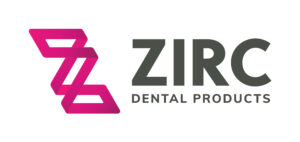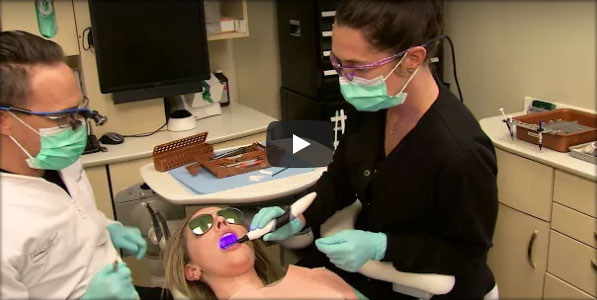If OSHA showed up at your dental practice tomorrow, would you be compliant? Many practices cannot answer that question, and for some, they will find out the hard way through a penalty. The cost of these penalties has been on the rise over the years, and as of January 2, 2018, receiving one violation from OSHA would cost a dental practice $12,934. Failure to abate to that violation would lead to a $12,934 penalty per day beyond the abatement date.
With the proper mindset, communication and products, dental practices can benefit from being compliant, and the dental staff will minimize their risk of injury. There are many resources through the OSHA and CDC websites that will point dental practitioners in the right direction towards being compliant. Implementing Zirc products will also benefit a dental practice in meeting the OSHA and CDC guidelines along with enhancing procedure organization and efficiency.
Learn, lead and educate
One of the first steps towards compliancy in dental is to take some time to learn the standards that are out there. Cutting corners in this realm of safety is not recommended, because of the severity of the penalties and more importantly, the risks that may affect the practice, the staff and the patients.
You do not have to be a manger or the owner of the practice to take the lead in providing a safe working environment. Many dental practices choose one person to be the leader in safety and facilitator of the OSHA and CDC guidelines. That person can educate the dental team on why things should be done a certain way and how to do them effectively.
OSHA provides many of the tools needed to become compliant and to help get a dental practice pointed in the right direction:
Here is a complete list of the OSHA dental standards.
The CDC website also offers information and resources to enhance infection control at the dental practice.
Here are the Infection Prevention & Control Guidelines & Recommendations for the CDC.
Implement resin instrument cassettes for proper infection control
Zirc’s dental instrument cassettes comply with the CDC requirements. They provide the “contained” requirement described below, to offer protection against the dental staff during sterilization and transporting from room to room. While pouching instruments is a popular way to sterilize and transport, once the procedure is completed, there is nothing protecting the staff from exposed and contaminated instruments.
A potential poke from a sharp or needle may transmit a bloodborne pathogen, which could lead to the spread of disease, followed by a visit from OSHA or the CDC. If your practice is not current with OSHA and CDC requirements, then you and your practice may be liable to a patient or employee lawsuit in addition to the penalties and fines from the regulatory organizations.
CDC:
Dirty Instruments must be “contained” prior to transporting them. Containment can be defined as instrument cassettes or cages in which dental care items are cleaned, sterilized, and stored until point of use. Sharp instruments should not be carried openly to the instrument processing area. Percutaneous injuries may occur to other dental healthcare personnel (DHCP) or patients in hallways leading to the instrument-processing area.
Read the full CDC guideline here.
When you utilize instrument cassettes, the requirements are met for proper infection control. Along with this benefit comes the ability to identify, organize and streamline your dental procedures. Color-coding provides instant recognition to procedure items and keeps setup together from chairside to sterilization. The advantage of color-coding combined with the confidence in health safety can boost dental team morale and provide opportunity for a more prosperous practice.
For product information and how the utilize color coding at a dental practice, visit our website and download a free Color Code Guide.
Safe-Lok System prevents cross-contamination
Our Safe-Lok Tray and Tub System is the optimal way of securely transporting contaminated items from chairside to sterilization. The trays and locking covers properly contain the used instruments and prevent spilling of any other procedural materials. This unique system affords a dental practice to comply with the OSHA requirements for preventing cross-contamination while providing safety to the dental team and patients
OSHA:
Immediately or as soon as possible after use, contaminated reusable sharps shall be placed in puncture-resistant, leak-proof and labeled or color-coded containers until properly reprocessed. (To avoid spillage of contents, it is suggested that they be covered and secured prior to moving.)
Read the full OSHA standard here.
Beyond meeting the OSHA requirements, our Safe-Lok System assists in streamlining procedural performance as well. By utilizing the Safe-Lok Tray System, a dental practice can set up their instrument trays ahead of time and store them conveniently until it is time to perform. Once the procedure is completed, the locking cover is secured on to the tray and they are stacked in sterilization ready for processing.
The Tub becomes a “portable drawer” that contains procedure specific materials, and the bulk supply is stored out of the operatory in the sterilization area, a spare room or closet. This improves inventory control and procedure flow, because no items are missing when it is time to perform at chairside.
Recently, a dental practice took on our color code system through our new efficiency consultant program, RESET. By implementing our Safe-Lok Tray and Tub System along with cassettes and other dental instrument organizers, Dr. Cappy’s practice has felt the positive effects of being organized. By utilizing Zirc products, they are more also compliant with the OSHA and CDC requirements.
You can watch their testimonial video here.
Moving forward
Meeting OSHA and CDC requirements takes some time to implement, but will reassure that your practice is creating a safe environment for your team and your patients. It provides a great advantage to market over the competition, and creates longevity for the practice and dental team.







